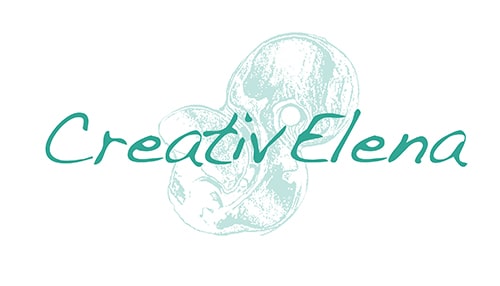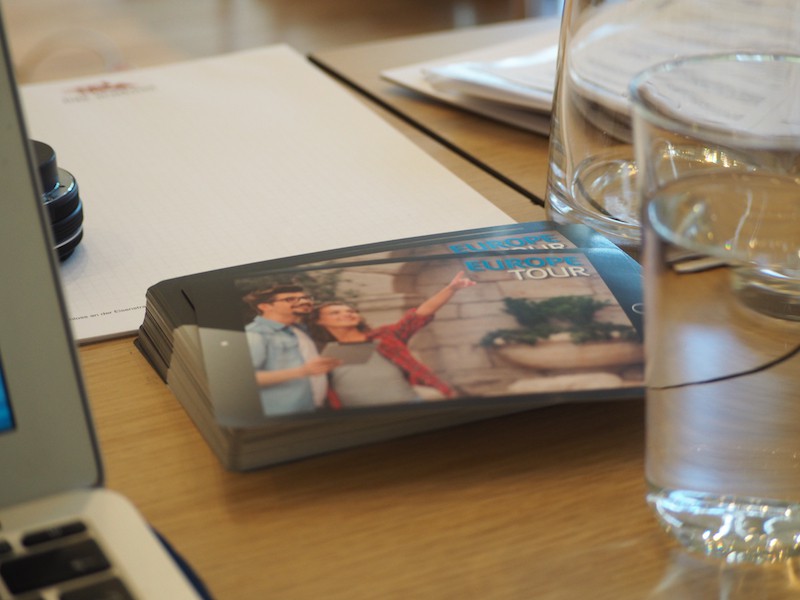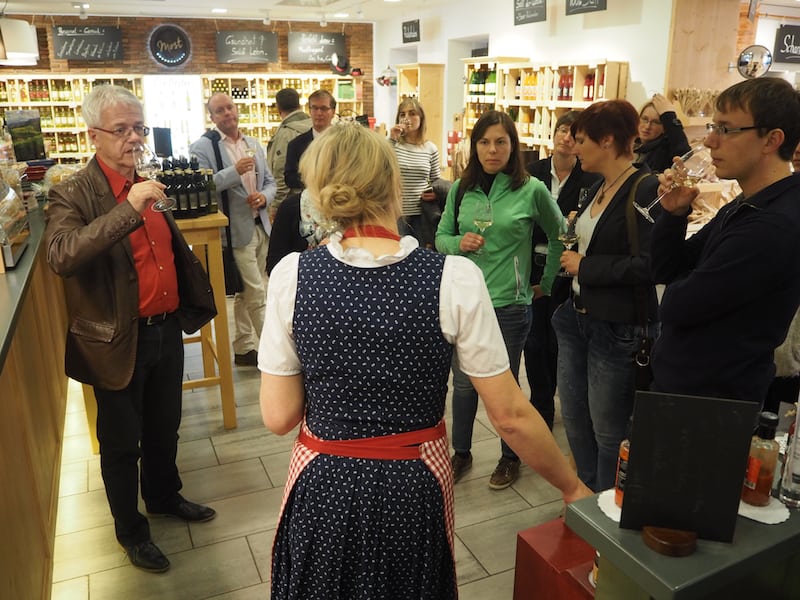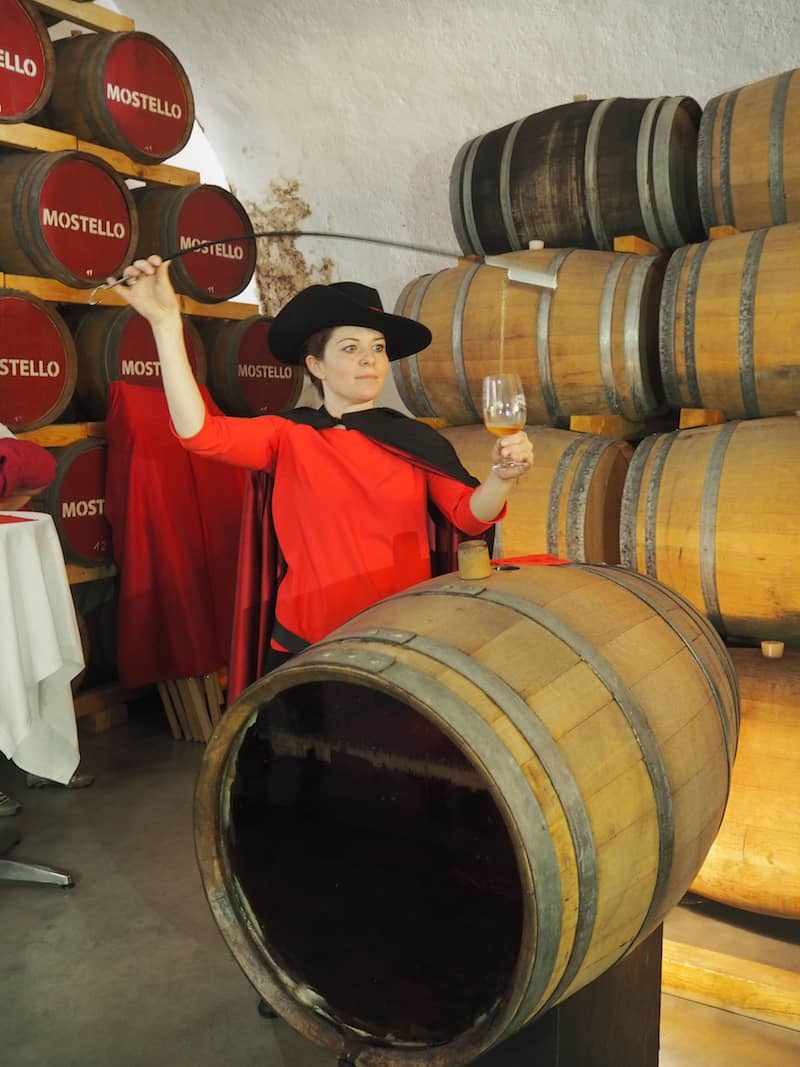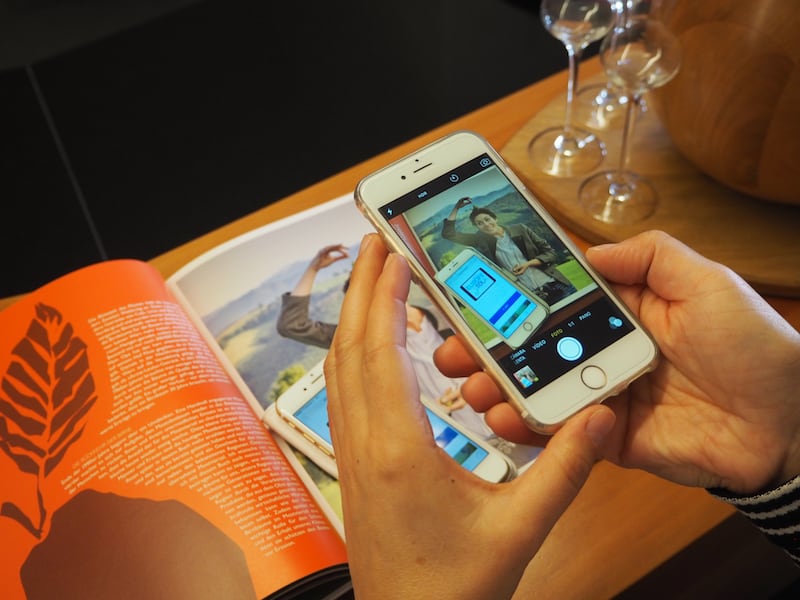Veni vidi vici. I came, saw and won. Not quite like Cesar did, but much in the sense of conquering more (knowledge) terrain. Talking about cultural tourism management & digital communication skills … So much to be learned and developed still! The future is a bright place, my dear readers. Even, or especially, at a cooperative European Union level, despite the many daunting news that have reached us as of recent.
Together as a team, our EuropeTour experts from Spain, Italy, Romania, Bulgaria, Belgium, Germany & Austria have gathered for the second time after kick-starting our three-year Erasmus-funded qualification programme for developing cultural tourism in rural areas across Europe.
This time, the aim has been to discuss results from our inaugural EuropeTour survey so as to establish training modules for stakeholders in cultural tourism.

EuropeTour “Networking Power”: Me & my team responsible for the networking output of this prestigious EU programme.
The principal aim of the EuropeTour survey has been to disclose the training needs of stakeholders in cultural tourism across Europe. The survey has been conducted neither exhaustively nor scientifically, but rather as a bottom-up, practical approach highlighting the most relevant issues currently being discussed in rural cultural tourism development.
All over Europe, the survey has been sent out to 2.900 people, out of which 340 replied, resulting in a response rate of about 12%. The three main survey outcomes are:
- A clear desire to improve marketing & PR skills.
- A need for cooperation which goes further than just local and regional levels.
- An awareness of the business (development) aspects of cultural tourism in rural areas.

Breathing some fresh air: What an inspiring place for a rural cultural tourism meeting here in the city of Waidhofen!
Next up, Clarissa Schmitz, of the Mostviertel Tourism Destination, treated us to an extensive presentation about local destination management skills and marketing channels used.
As someone local to Lower Austria, familiar with Waidhofen as well as the Mostviertel destination management strategy since preparing my tourism management university exams, I must say I fell rather early for this particularly scenic destination at the foothills of the Eastern Alps in Europe. Read more about my recent creative travel excursion to this part of Lower Austria here!
Clarissa Schmitz then went on to say that the Mostviertel has been set up as a destination management organisation back in the year 2002. It went from an annual budget of 1.8 to 6 million Euros in a matter of “just” 12 years. 70% of the destination’s business is generated from day trips & excursionists, with roughly 30% amounting to business created by overnight stays.
The tourism offer of the Mostviertel is based on the three pillars of nature, culture & history. 500.000 cultivated fruit trees, for instance, have resulted in an offer called the local “Moststrasse” (Cidre Trail). The so-called “Mostbarone” (Cidre Experts) are the leading knowledge providers here, a group of 25 entrepreneurs (producers, restaurant owners, and hotels) with a focus on quality promotion of local cider produce. Out of 300 different types of pears, 30 are used to produce “Most” (pear cider) – a light fruit wine with a small percentage of alcohol. The key success factors of the “Moststrasse” project have been the strong cooperation among farm holiday accommodation businesses, the “Mostbarone” local entrepreneurs themselves, as well as the destination management organization, resulting in this project gaining the EDEN award of excellence in 2015.

“We are Mostviertel”: The brand message too focuses on strength through cooperation across industries and geographical boundaries.
As one of the destination’s big trends, Clarissa Schmitz mentioned some 20.000 annual overnight stays at the Mostviertel farm holidays in 2014, with the very “Tag des Mostes” Cidre Day now attracting 120.000 visitors in 2015, as opposed to 5.000 in the year 2000. Generally speaking, Mostviertel Tourismus has carefully managed a shift from winter tourism, to a 50% summer, 50% winter tourism activity in the Lower Austrian Mostviertel, where weather-dependent activities still account for a major challenge in pushing shoulder and summer seasons. The (brand new) website www.mostviertel.at is definitely seen as very important for getting people interested in booking trips and destinations in the Mostviertel, with most visitors interested in sustainability, regional specialities, slow travel, and local produce.
“Our central success message is based on good cooperation among strong partners, who really go all the way with us. In the end, it really depends on who is prepared to go the extra mile with you.” (Clarissa Schmitz, Mostviertel Tourismus).
Last but not least, our EuropeTour project meeting focused on a discussion of the upcoming, multilingual training modules to be developed based on the results from the EuropeTour survey. Their aim is to address all identified needs from the survey, resulting in an extensive qualification scheme for staff of tourism agencies as well as cultural institutions. The languages of publication will be English, German, Bulgarian, Spanish, Italian, Romanian and Polish. Stay tuned for more!
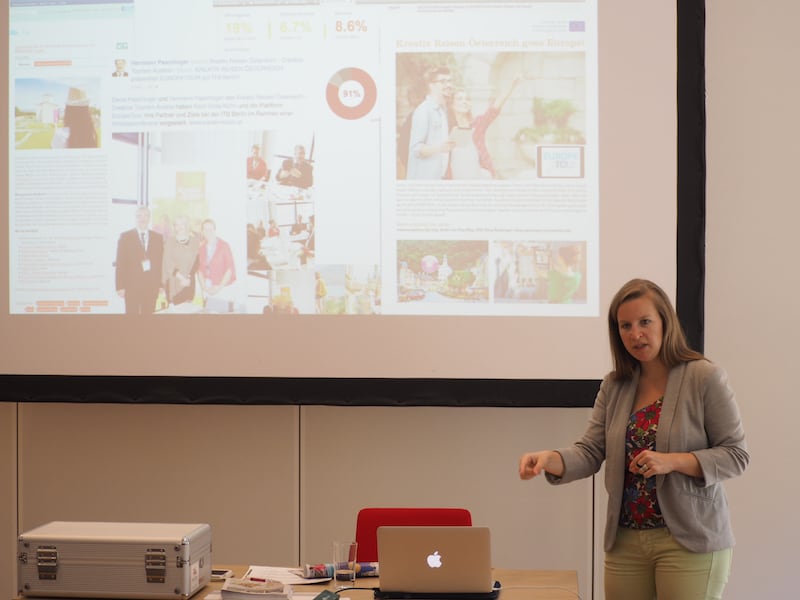
… including a project dissemination seminar run for my team, featuring aspects such as blogs, the correct use of Social Media and many more.

… thank you, Wolfgang Eisenreich, for your active engagement in leading the training module session !! …

… as well the engagement provided by our team in general: Here in the interactive MostBirnHaus cider museum …

Thank you, Waidhofen, for such a warm welcome in the Mostviertel, here during our guided night watch tour …
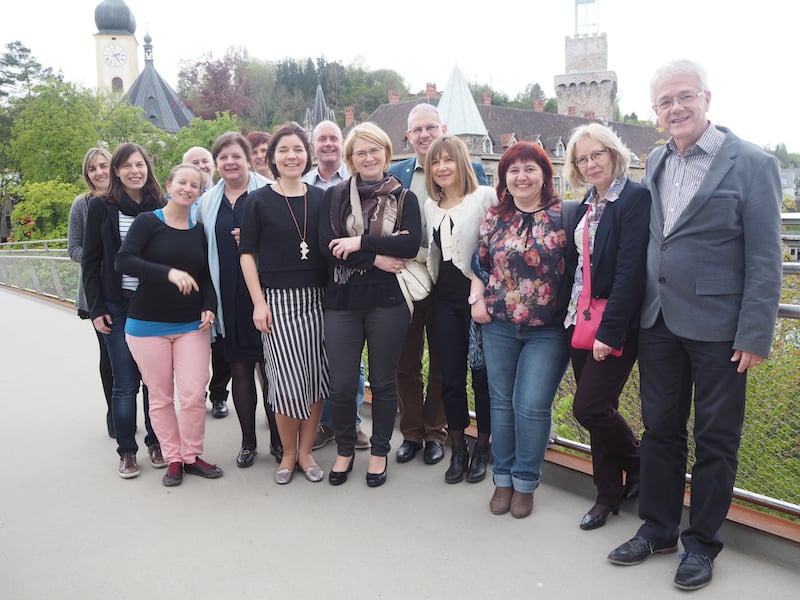
… as well as our lovely team in general: From left to right, Pilar Bahamonde (Camino Lebaniego in the Spanish province of Cantabria), Sandra from Heilbronn, Vicenzo (Italian Marche Region), Lilian Grootswagers (FRH Future for Religious Heritage), Tanja Seegelke (Heilbronnerland Tourismus), Sandra Coumans (FRH Future for Religious Heritage), Stefan Baier & Izabela (German-Polish Klosterland association), Wolfgang Kniejski & Angela Ivanova (INI-Novation from Bulgaria), Lacramioara Beilic (Bucovina Tourism Association in Romania), Karin Drda-Kühn (Verein Kultur & Arbeit in Germany), as well as Wolfgang Eisenreich (E-C-C project office in Vienna).
